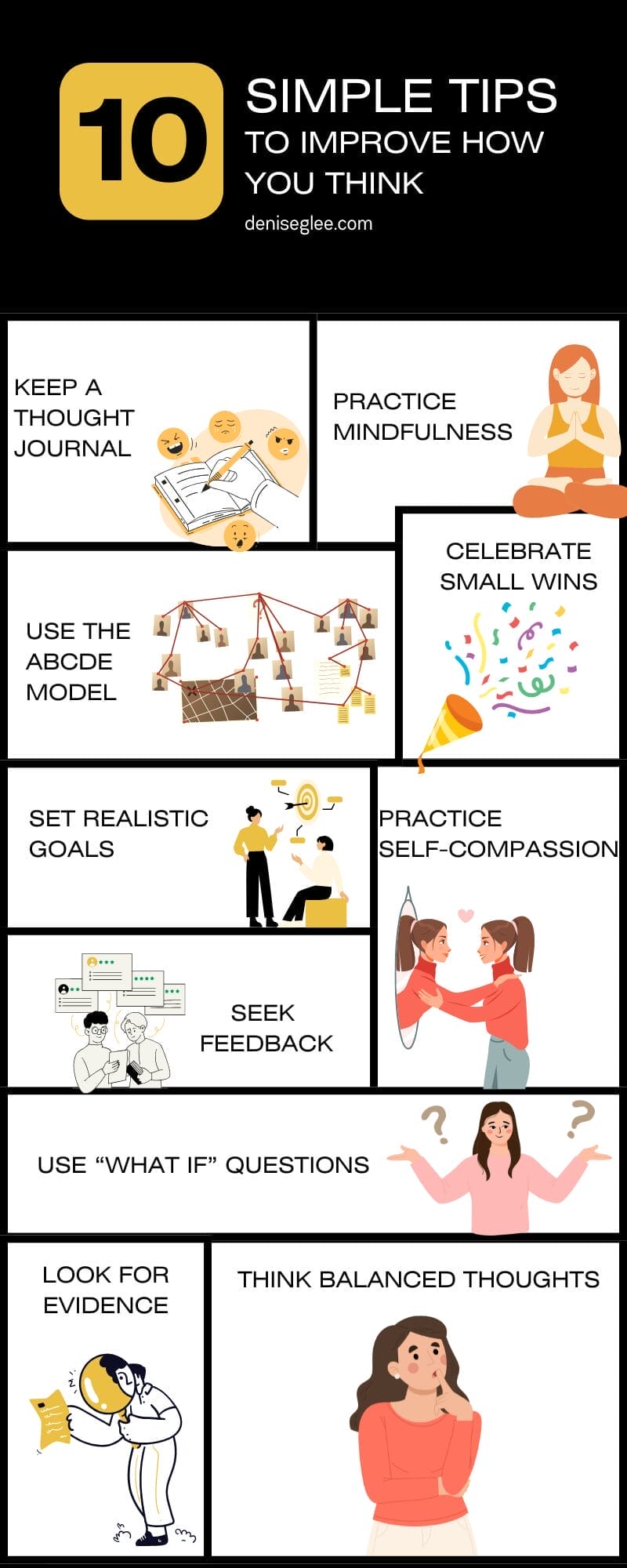
Stop Fighting Ghosts: How to Recognize and Interrupt Cognitive Distortions
- Updated: May 5, 2025
Ever left a conversation and thought, “Something felt off, but I can’t explain it”?
That’s cognitive distortions—when what we feel, say, or believe doesn’t line up with what we know, deep down, to be true. It’s a tension that builds silently, like background noise in a song that’s just slightly off-key.
It’s like a duet gone wrong: one person’s playing a G chord on the piano, and the other grabs a guitar with a capo on the wrong fret. They’re both playing “truth,” but they’re not playing in tune.
That’s where many of us live—especially in leadership, parenting, or emotionally charged relationships. We’ve been trained to protect people’s feelings, avoid offense, manage perception. But all that image maintenance means we’re often not honest, not clear, and definitely not at peace.
We tell ourselves it’s compassion, but deep down, our brain knows something’s not right.
And culture isn’t helping. In our rush to elevate “my truth,” we’ve thrown out the truth. Now everyone’s speaking their own private language of reality—and no one’s sure who actually heard what.
It’s why so many of us walk around exhausted, disconnected, and quietly wondering, “Am I crazy, or is this whole thing messed up?”
You’re not crazy. You’re likely caught in a swirl of cognitive distortions.
Let’s Break This Down
As a healing and leadership coach, I’ve seen how our thoughts can shape our reality—for better or worse. And I don’t just mean thoughts like “stay positive” or “hustle harder.” I mean the ones that quietly whisper, You’re not ready. You’re not worthy. You’re going to mess this up.
Those thoughts are what we call cognitive distortions—patterns that twist reality just enough to keep us small, scared, and second-guessing. They feed imposter syndrome, perfectionism, procrastination—and before we know it, we’re living a life that’s driven more by fear than by truth.
So today, I’m not giving you a pep talk.
I’m giving you tools. Real ones. The kind that help you spot the lie as it’s happening and choose something better.
Let’s get to it.
What We'll Unpack Together
Why This Matters for Leaders and Business Owners
In the fast-moving world of leadership, clear thinking isn’t optional—it’s survival.
Every day, you’re making decisions, navigating relationships, interpreting feedback, and handling pressure. But if cognitive distortions are running in the background, even your smartest moves can get warped.

These patterns don’t just affect your mood—they mess with your strategy, your clarity, and your team.
When you know how to spot them, you can:
Make cleaner, more grounded decisions
Navigate conflict with less emotional fallout
Lead with clarity, not ego or insecurity
Boost resilience when things don’t go as planned
Create a work culture rooted in honesty, not hidden stress
As Dr. David Burns—one of the original voices in cognitive behavioral therapy—puts it:
“It’s not the actual events but your perceptions that result in changes in mood. When you’re sad, your thoughts reflect that. But when you’re depressed or anxious, your thoughts are almost always distorted, unrealistic, or just plain wrong.”
And if you’re leading people while running on distorted thinking?
That distortion multiplies.
Let’s pull back the curtain and look at what’s really happening in the brain when these thought traps take hold.
The Science Behind It
Cognitive distortions aren’t random. They come from how your brain processes—and sometimes misprocesses—information. Blame it on your nervous system: specifically, the part designed to protect you.
Let’s break it down.
When your brain detects a threat—real or imagined—it sends up a flare. That flare comes from your amygdala, the drama queen of your brain. It’s part of your limbic system and its job is to scream, “Danger!” even if the “threat” is just a risky email or a tense meeting.
Meanwhile, your prefrontal cortex—the part responsible for planning, logic, and long-term thinking—might quietly duck out. It underreacts when emotions take over. It’s like your inner GPS glitching mid-drive: instead of finding the best route, it gets distracted by shiny billboards and panic detours.

Here’s where it gets tricky:
Over time, your brain builds neural pathways—patterns based on what you’ve been through. If you’ve faced rejection, criticism, or failure, your brain remembers and builds defenses. These shortcuts can help in a true emergency, but they also form cognitive distortions: thought patterns that bend reality just enough to keep you safe, but also stuck.
Business failures. Embarrassing moments. Cultural messages. Childhood wounds.
All of it influences how you approach decision-making today.
Ever passed on a big opportunity just because your brain whispered, “Remember when you froze up last time?” That’s not wisdom. That’s distortion in disguise.
And let’s be real—if we believed every anxious thought that popped into our heads, we’d all be hiding under the bed every time it thundered.
Why Challenging Distortions Matters
If we don’t challenge the stories in our heads, we risk living in narratives that were never true to begin with.
Cognitive distortions might start as protection—but if left unchecked, they turn into self-sabotage. They warp how you see yourself, your team, your goals, and your future. And let’s be honest, you can’t lead clearly if your internal lens is cracked.
Here’s what changes when you start challenging your distortions:
Clearer decisions – You stop spiraling and start thinking with strategy.
Healthier relationships – You respond, not react. That changes everything.
Greater resilience – You bounce back faster because your thinking isn’t rigged against you.
Smarter problem-solving – You can actually see the problem instead of just feeling overwhelmed by it.
Less stress – Because your thoughts aren’t constantly pulling you into worst-case scenarios.
Dr. Aaron Beck, the father of cognitive therapy, put it simply:
“The way individuals perceive a situation is more important than the situation itself.”
So the real question isn’t what’s happening—it’s what are you making it mean?
Let’s get honest about the most common distortions that sneak into your thinking and how to start untangling them.
Common Cognitive Distortions (a.k.a. Mental Saboteurs)

These thought patterns often feel true, but they distort your perception and chip away at your confidence, clarity, and connection.
Here’s what to watch out for:
All-or-Nothing Thinking
Example: If my presentation isn’t perfect, it’s a total failure.
Reframe: Even if it wasn’t perfect, I delivered value and showed up prepared. That counts.
Overgeneralization
Example: I messed up this one meeting—I always screw things up.
Reframe: One rough meeting doesn’t define my entire ability. I’ve handled other challenges well.
Mental Filtering
Example: Everyone liked my idea except one person, so it must have been terrible.
Reframe: Most people responded well. I can consider the one critique without dismissing the positives.
Discounting the Positive
Example: That compliment doesn’t count—they were just being polite.
Reframe: It’s okay to accept kind words. They wouldn’t have said it if they didn’t mean it.
Jumping to Conclusions
Example: She hasn’t replied yet—she must be upset with me.
Reframe: There could be a dozen reasons for the delay. I’ll give it time or follow up calmly.
Catastrophizing
Example: If this deal doesn’t close, my whole business is doomed.
Reframe: This deal matters, but it’s not the only opportunity. I’ve bounced back before.
Emotional Reasoning
Example: I feel overwhelmed, so I must be in over my head.
Reframe: Feeling overwhelmed is part of growth. I can break this down into manageable steps.
Should Statements
Example: I should’ve figured this out by now.
Reframe: I’m learning in real time. Growth takes as long as it takes.
Labeling
Example: I failed that task, so I’m a failure.
Reframe: Failing at one thing doesn’t make me a failure. It makes me human—and still learning.
Personalization and Blame
Example: The team’s underperforming—this must be my fault.
Reframe: I can own my role without taking responsibility for everything. Leadership is shared.
Train Your Mind to Think Clearly Again
For years, I assumed people were manipulating me. Compliments felt like setups. Criticism felt like proof I’d never be enough. And God help anyone who brought up something that triggered my anxiety—past, present, or future. I wasn’t thinking clearly. I was thinking through the lens of distortion.
That’s the thing about cognitive distortions—they don’t just twist your thoughts. They twist your trust, your energy, and your ability to lead yourself with peace.
Healing required more than just regulating my nervous system. I had to learn how to think better. That meant getting honest about the stories I told myself—and practicing tools that helped me challenge them.
Here’s what helped (and what still helps me today):

🖊 Keep a Thought Journal
Write it down. Not just the feeling—but what triggered it, what you thought, and what you did next. This isn’t about venting—it’s about pattern-spotting. What keeps showing up? That’s your work.
🧠 Practice Mindfulness (No, Not the Fancy Kind)
This is just paying attention—without panic or performance. Watch your thoughts like you’d watch a crowded street: curious, not reactive. When you notice a spiral starting, name it.
🔍 Use the ABCDE Method
Break the cycle with this simple framework:
A: What triggered you?
B: What belief popped up?
C: What did it make you feel/do?
D: What’s the truth?
E: How do you feel now?
Think of this as mental jiu-jitsu: you’re redirecting the force, not ignoring it.
👂 Get Outside Feedback
If your brain is acting like a courtroom, invite in a second opinion. Ask someone grounded, not dramatic. You’re not looking for a pep talk—you’re looking for perspective.
🎯 Set Realistic Goals
Stop thinking it all has to happen now. Break it down. Make it doable. This isn’t laziness—it’s strategy.
💛 Practice Self-Compassion
Talk to yourself the way you’d talk to someone you love. Not tolerate—love. When you mess up, don’t spiral. Ground yourself. You’re still learning.
🤔 Flip the “What If” Script
“What if I fail?” gets way too much airtime. Try: What if this works? What if I’m ready? What if things go well this time? Train your brain to expect possibility.
📚 Look for the Evidence
Before you crown a thought as truth, fact-check it. Is this based on something real—or just fear in costume? Often, there’s way less proof than your anxiety makes it seem.
⚖️ Create a Balanced Thought
No fake positivity. Just truth. If your inner voice says, “I’ll never get this right,” try, “I’ve struggled before, but I’ve also figured things out.” That’s honest. That’s powerful.
🎉 Celebrate the Catch
Every time you spot and reframe a distortion, that’s a win. You’re rewiring your brain in real time. Don’t wait until it’s all perfect. Celebrate while it’s still messy.
You’re not “broken.” You’re just unlearning some deeply wired fear responses.
And that’s sacred work. Keep going.

Final Thoughts
Cognitive distortions are part of being human—but they don’t have to run the show. You get to interrupt the script.
Here’s what I want you to remember:
Notice and Name It
Start paying attention to the stories your mind spins. Not every thought deserves the final word.Be Patient With the Process
Rewiring your thinking isn’t a weekend project. Give yourself room to grow. Progress doesn’t always look pretty—but it’s still progress.Stay Committed to Clarity
The more you challenge distortion, the clearer your leadership becomes. You make better choices. You stop over-functioning. You breathe easier.You Don’t Have to Do It Alone
If you’re ready to think differently—and lead with more emotional honesty—I’m here. This is the work I do with clients every day: helping them untangle the lies, get honest with themselves, and lead from truth.
Your thoughts shape your reality.
And when you learn to question the distorted ones, you start creating a life that’s built on strength, not fear.
💬 Reflect:
Ever caught yourself spiraling into stinking thinking? What helped you step back?
👉 Share your experience here
🎧 Tune In:
Want to go deeper? Check out my podcast for real talk on emotional clarity, healthy leadership, and the truth about healing in business and life.
👉 Listen to the Introverted Entrepreneur





